Makers, don't let yourself be forced into the 'manager schedule'
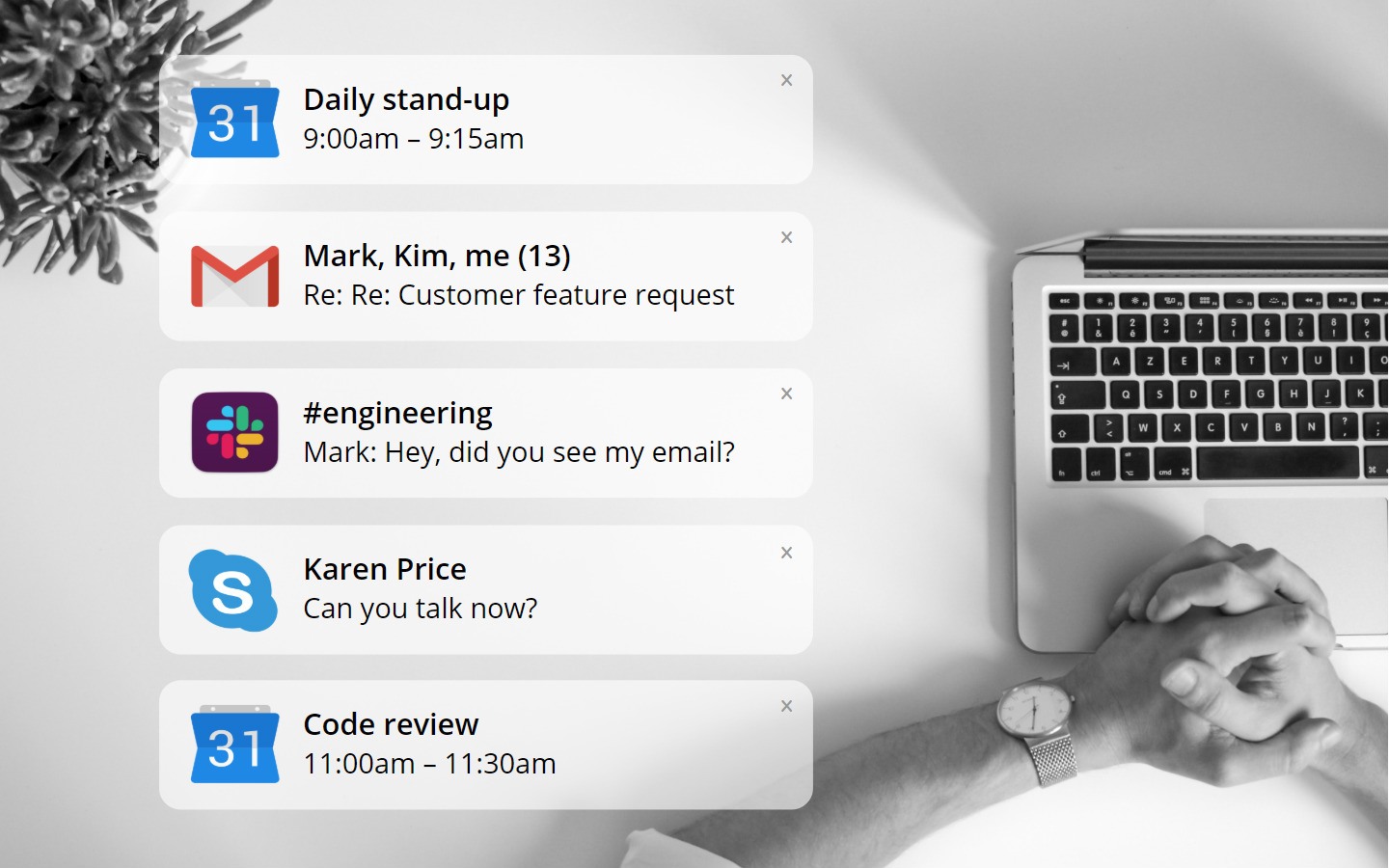
In Masters of Doom, a book about the game development company id Software and its influence on popular culture, David Kushner reflected on the unconventional working style of the company's ace coder, John Carmack.
To increase his productivity and find a break from distraction while working on his breakthrough Quake engine, Carmack adopted an aggressive tactic – he began gradually shifting the start of his workday.
Eventually, he was starting his programming in the evening and finishing just before dawn.
These uninterrupted stretches of silence, isolation, and deep work allowed Carmack to reinvent gaming with the world's first lightning-fast 3D game engine.
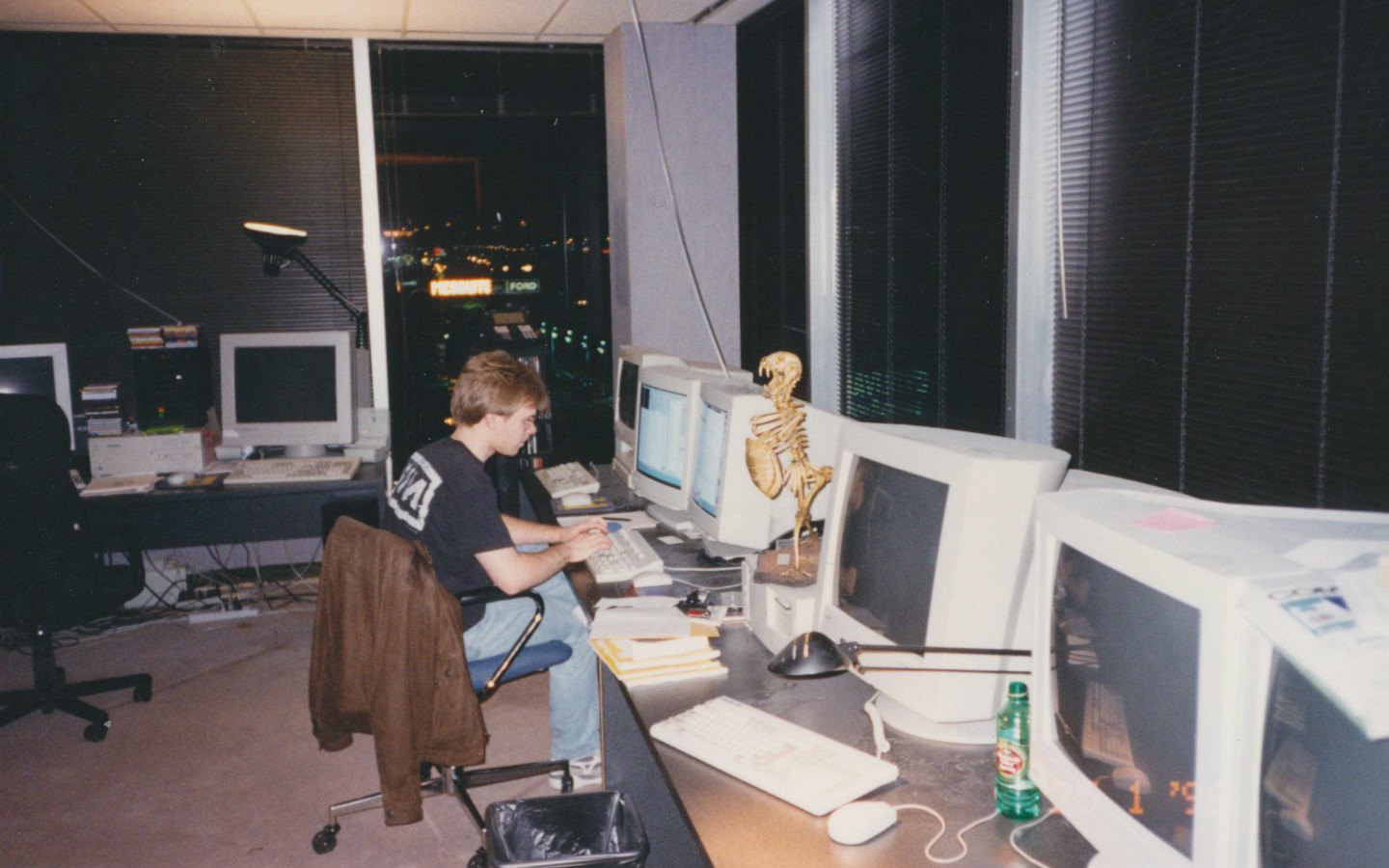
A tale of two schedules
While Carmack's schedule may have made it harder for the rest of his team to reach him at times, the value he produced while working at his full cognitive capacity far outweighed that inconvenience.
The 'Carmacks' of the world – those whose work involves writing code, getting creative, and problem-solving – operate on what tech investor Paul Graham refers to as the maker schedule. In his 2009 essay titled “Maker’s Schedule, Manager’s Schedule”, he argued that people who make things operate on a different schedule from those who manage things.
As Graham elaborates:
Managers' days are “cut into one-hour intervals. You can block off several hours for a single task if you need to, but by default, you change what you’re doing every hour.”
Makers, on the other hand, “generally prefer to use time in units of half a day at least. You can’t write or program well in units of an hour. That’s barely enough time to get started.”
For managers, interruptions in the form of meetings, phone calls, and Slack notifications are normal. For someone on the maker schedule, however, even the slightest distraction can have a disruptive effect.
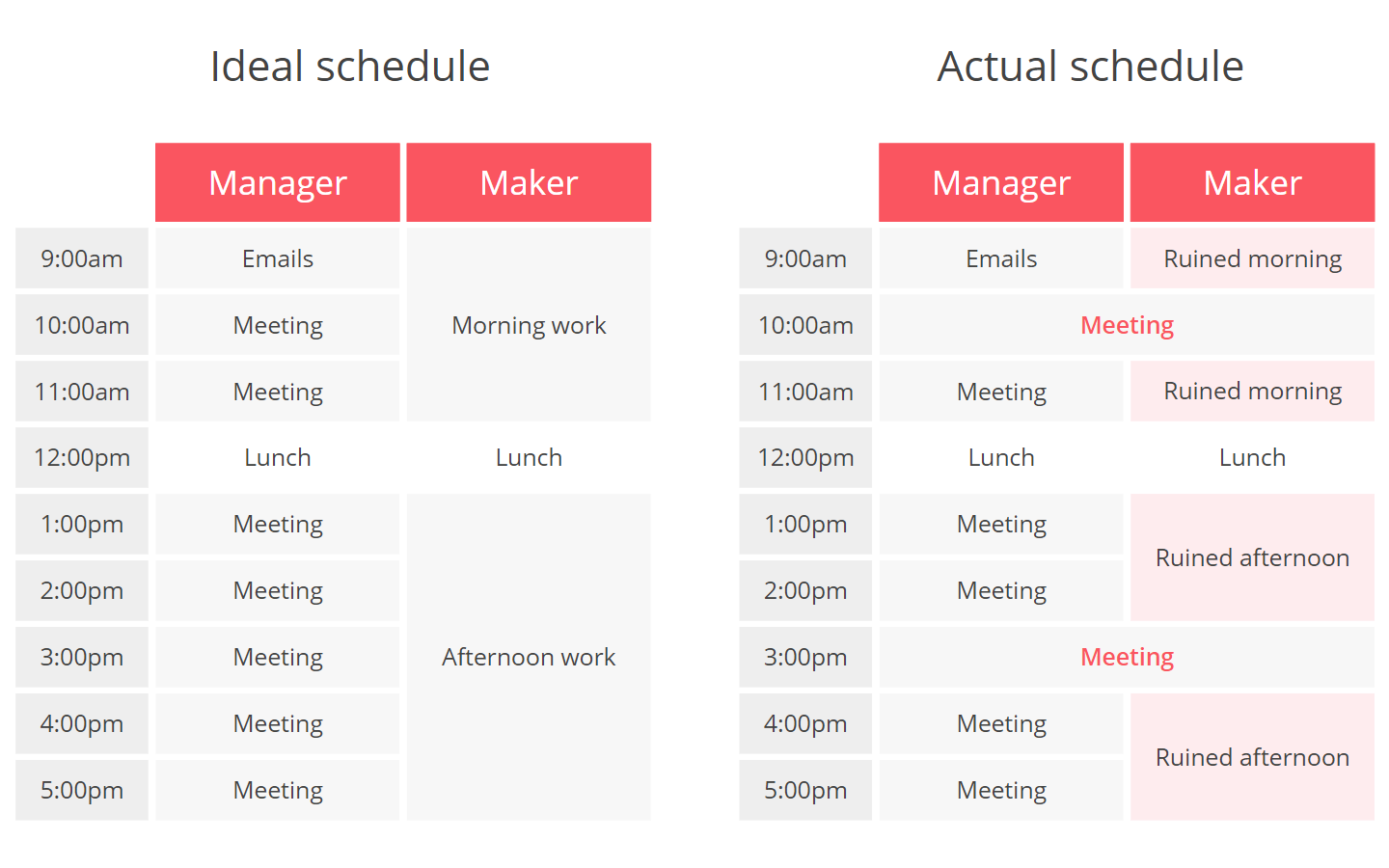
Research shows that it takes as long as 30 minutes for makers to get into the flow and we can't simply switch from one task to another. Instead, it changes the whole mode in which we work and this constant context switching prevents our brains from fully engaging the task at hand. A study conducted by Gloria Marks, a Professor of Informatics at the University of California, revealed that it takes us an average of 23 minutes and 15 seconds to refocus on a task after an interruption, and even when we do, we experience a decrease in productivity.
A single standup meeting can, therefore, blow a whole afternoon by breaking it into two pieces each too small to do anything substantial in. And if you know your work is going to be interrupted, why bother starting anything ambitious?
Working in an open office renders us even more vulnerable.
It's a manager's world
Separately, managers and makers work fine. Friction happens when they meet. And since most powerful people operate on the manager schedule, they're in a position to force everyone to adapt to their schedule, potentially wrecking the makers' productivity.
And the predictable result is – almost no organizations today support maker schedules.
The reasons why most managers fail to accommodate the makers and their schedule are quite straightforward.
Immediate convenience over long-term productivity
Instant messaging tools like Slack transformed the way we communicate at work, empowering the managers to collaborate with makers at their convenience. The work style these tools enable fits the managers' schedule so neatly, that they often don't see the costs to the maker. Immediate response becomes the implicit expectation, with barely any barriers or restrictions in place.
And in the absence of barriers, convenience always wins.
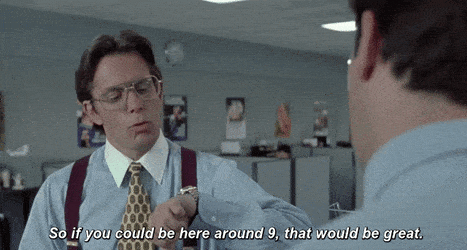
No such thing as “too much collaboration”?
The reason why many managers fail to see and address this problem is that they are used to looking at communication and assume it's a good thing. Because they see activity. People are attending meetings, talking to each other, the online presence indicators are bright green. Clearly, a lot of work is happening!
At the same time, real work is not getting done. Meaningful work is usually done quietly and in solitude.
“It's fine as long as I keep busy”
Most makers don't have the levels of control and autonomy necessary to block out half a day without any calls or meetings. So instead of pushing the issue with the management, we try to compensate by attempting to multitask – unfortunately, that rarely works. Building context can take hours, and context switching between communication and creative work only kills the quality of both.
Being busy feels like work to us, but it’s not the work that needs to be done.
Working like a maker in a manager-dominated organization
In many companies, the choice that the makers face is that between caving to the managers and sacrificing their deep work time and productivity – or offending people.
But there are smarter compromises.
Maker-manager “office hours”
The first technique that Paul Graham recommends to simulate the manager’s schedule within the maker’s is “office hours”.

Office hours are chunks of time that makers set aside for meetings, while the rest of the time they are free to go into a Do Not Disturb mode. Managers get their (brief) face time with the makers on their team, while makers get long stretches of time to get stuff done.
During his time as a technical lead at Buffer, Harrison Harnisch decided to apply this concept to his schedule, splitting his week up, and setting clear expectations about how a day should be treated. On Mondays and Fridays, he focused solely on collaborating with his team, while reserving the rest of the week for heads-down coding.
We have adopted a similar schedule at Nuclino, reserving several days per week for our “maker time” while working from home. It doesn't mean that we ignore all messages and only look up from our work when something is on fire – but the general expectation is that it's okay to not be immediately available to your teammates when you are focusing on your work.
“It is important to note that deep work time can be interrupted by things that are both urgent and important. However, treating every question as urgent is likely to do more harm than good.”
— Harrison Harnisch, former Technical Lead at Buffer
Thoughtful, content-centric, asynchronous collaboration
It's a natural knee-jerk reaction for many managers to schedule a meeting whenever a decision needs to be made. Most of the time, such meetings quickly morph into ad hoc group brainstorming sessions that may feel productive because of all the talking, but at the end of the day yield no tangible results, disrupting everyone's work for no good reason.
On the days that are reserved for collaboration, it does not always need to happen synchronously. Nor does it have to be face-to-face for it to be meaningful and productive.
Instead, communication can happen at a quieter asynchronous frequency in the form of thoughtful, written discussions rather than soul-sucking meetings or erratic one-line-at-a-time chat messages.
“People think it’s efficient to distribute information all at the same time to a bunch of people around a room. But it’s actually a lot less efficient than distributing it asynchronously by writing it up and sending it out and letting people absorb it when they’re ready to so it doesn’t break their days into smaller bits.”
— Jason Fried, Co-Founder & CEO at Basecamp

In our experience, the best way to prevent a useless meeting is to write up our goals and thoughts first. Despite working in the same office, our team at Nuclino has converted nearly all of our meetings into asynchronously written reports.
Not only does that preserve a detailed log – every meeting and project we've ever had is neatly documented – it also helps every team member have a say, properly express their thoughts, and absorb the input of others at a time and pace that is convenient for them.
Self-service knowledge base
A lot of the interruptions happen because people have repetitive questions and can't find the answers on their own. If the issue is a blocker, having to wait till the “office hours” start can be frustrating.
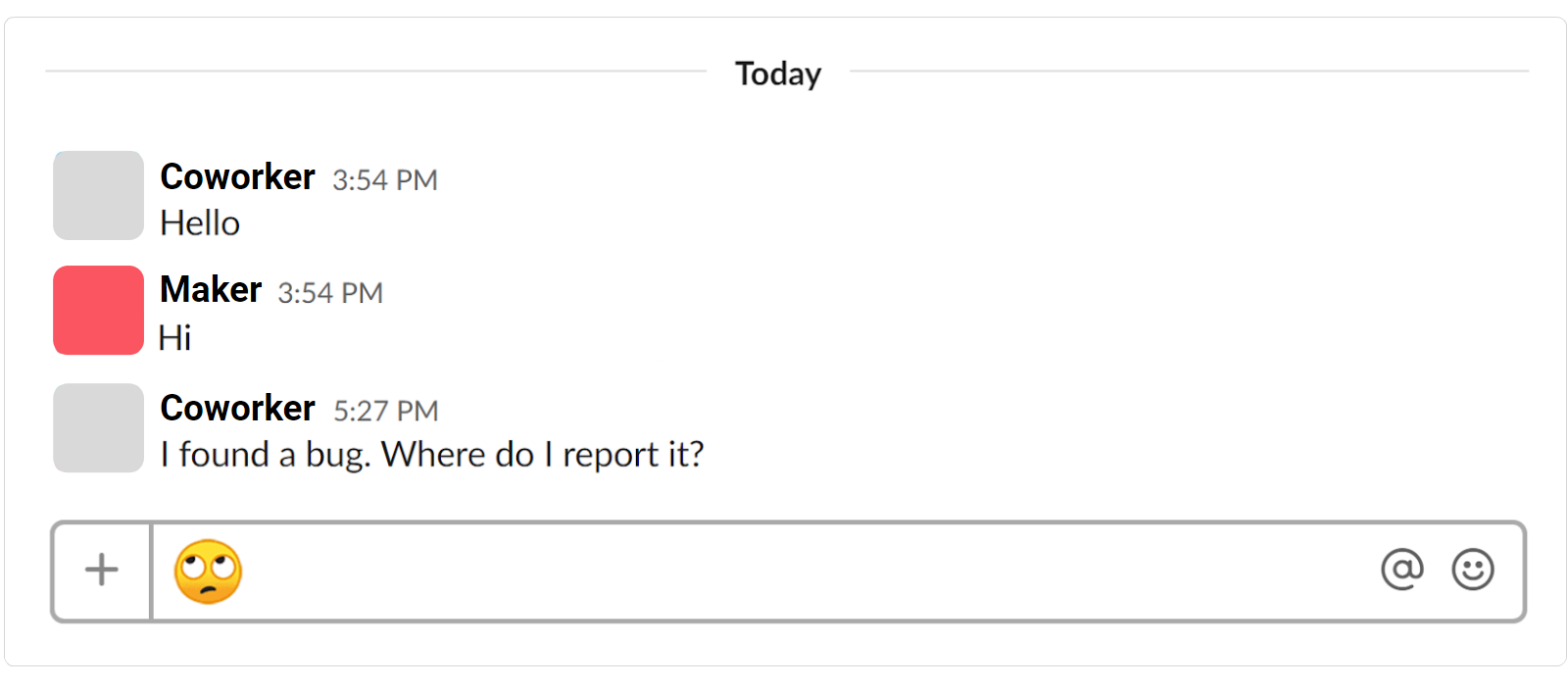
The most straightforward way to address this is to build an internal knowledge base. Not only does that minimize the number of repetitive questions bounced around the office, it allows new team members to basically onboard themselves.

But at the end of the day, it's a matter of culture. None of these rules would work if the management fails to see that makers need to follow a different schedule – and to make an effort to respect it.
The truth is, though there is a time and place for synchronous, instant, and face-to-face communication, that time is not all the time. In fact, very few things are urgent enough to justify the potential cost of an interruption. Most are trivial. And while the offices we work in and the collaboration tools we use may nudge us to adopt the ASAP culture, being always available and keeping busy are not sustainable substitutes for challenging, thoughtful work.
Keep calm and follow the nohello rule.